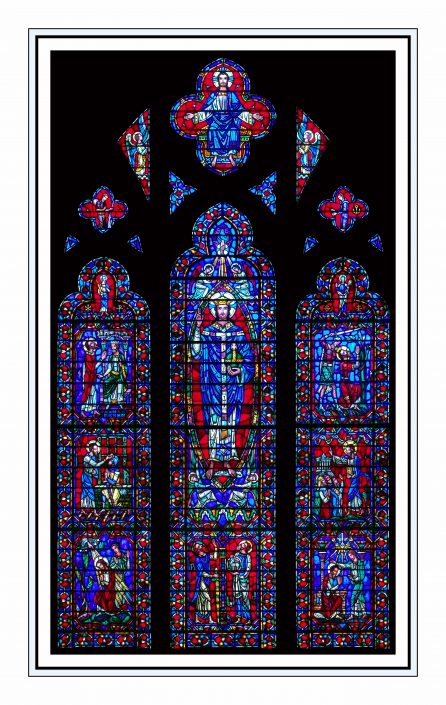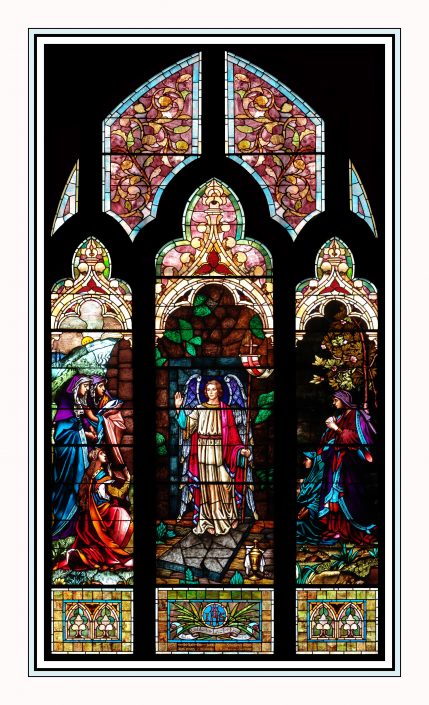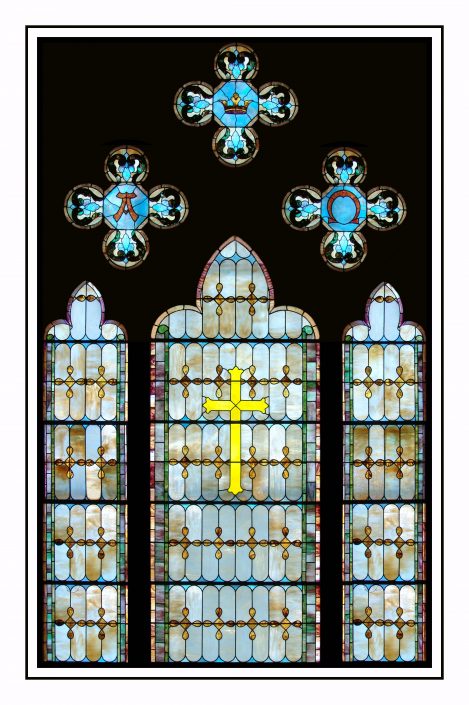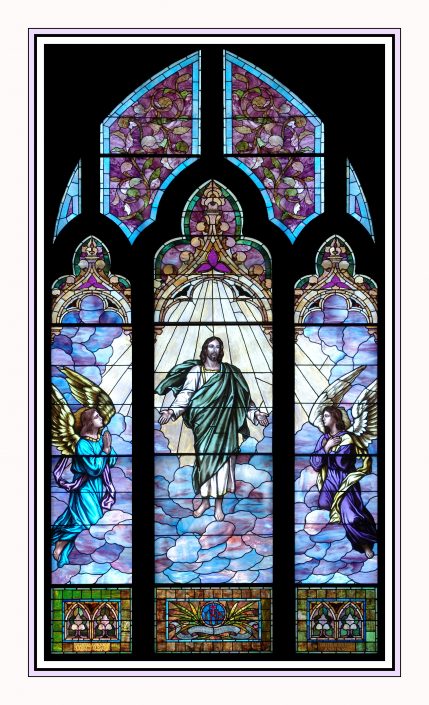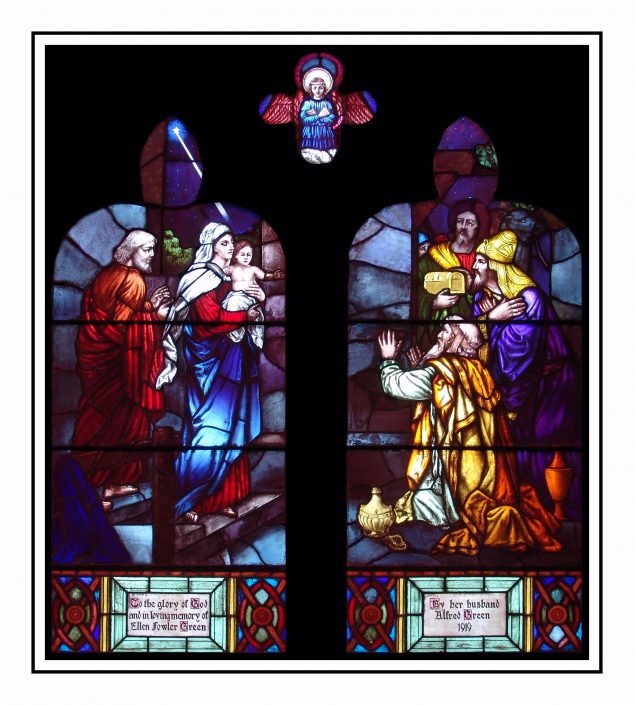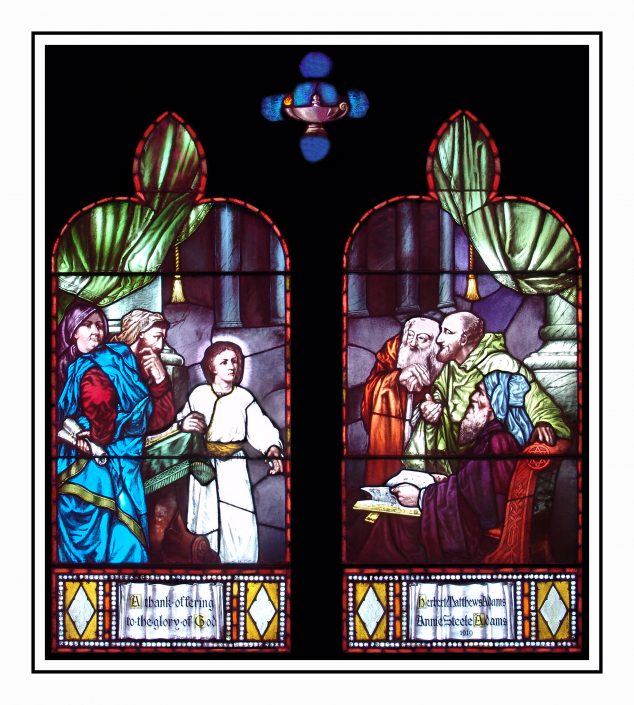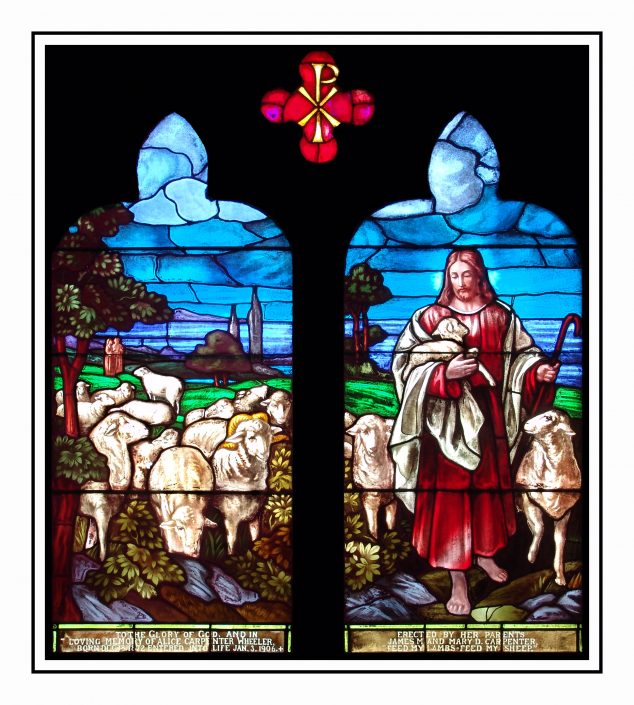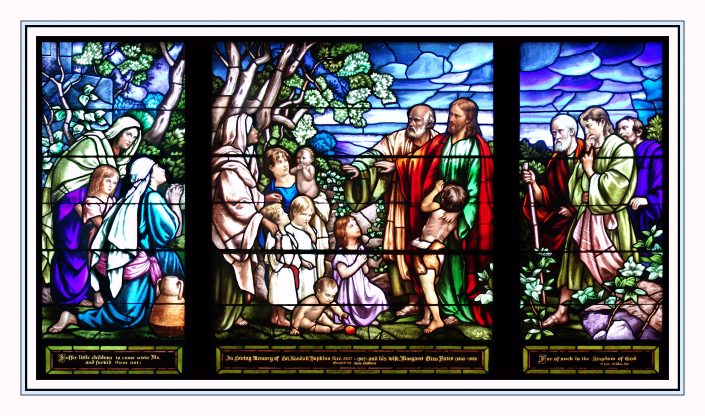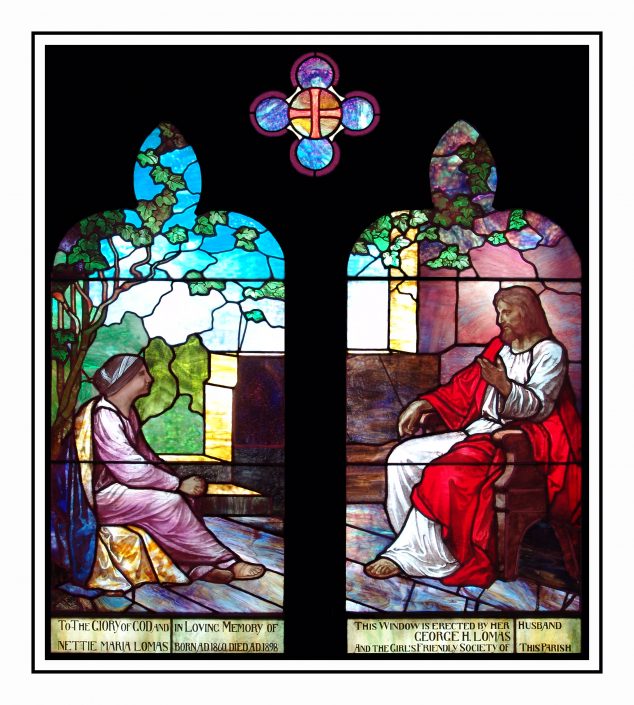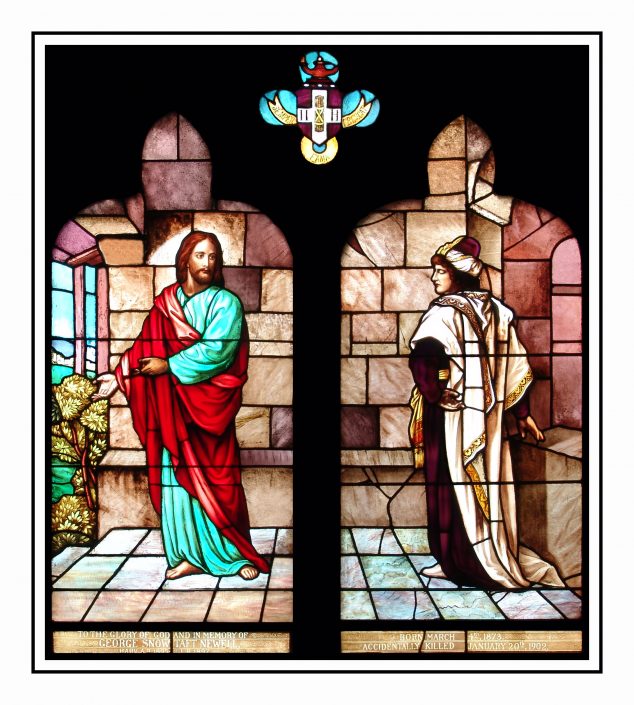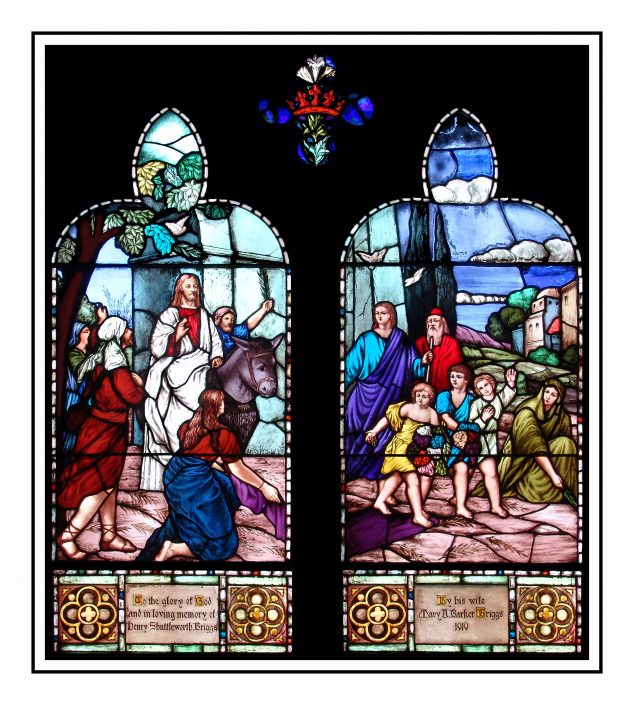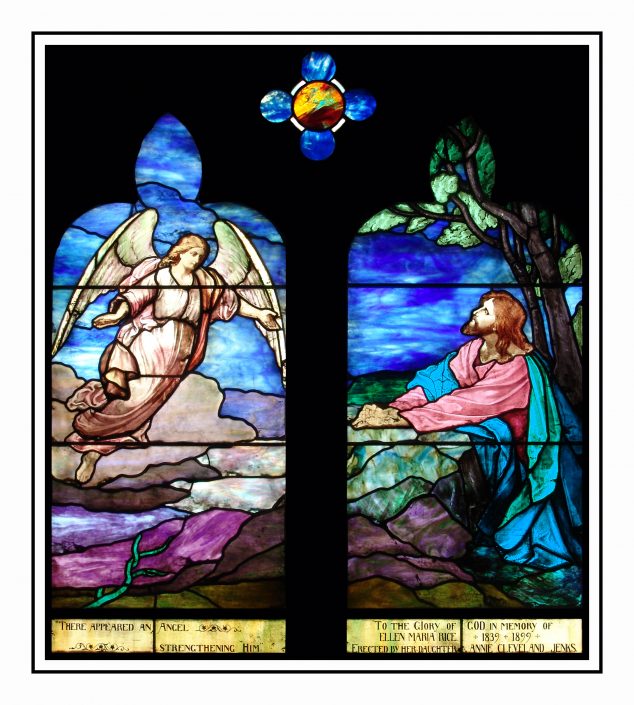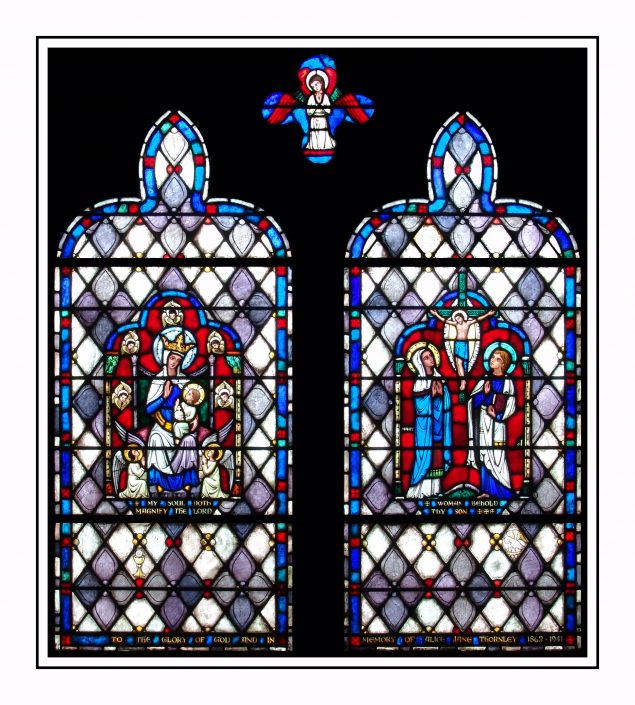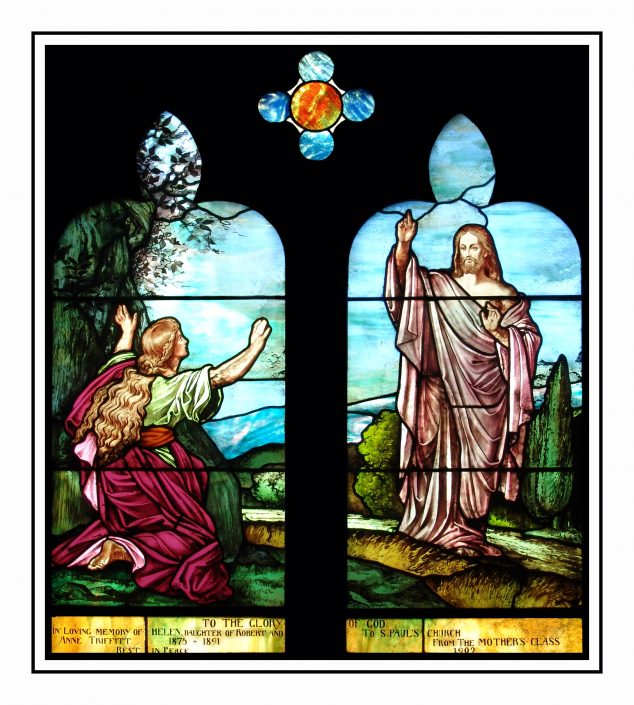Our Stained Glass Windows
The church is fortunate to have beautiful stained glass work from multiple studios, including Donald MacDonald and Reynolds, Francis & Rohnstock Studios, installed over a period of 50 years from 1901 to just after World War II.
___________
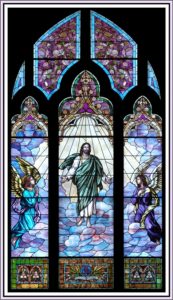 The Ascension Window
The Ascension Window
St. Paul’s Episcopal Church, Pawtucket
…
Depicts Luke 24:51: And it came to pass while he blessed them, he was parted from them and carried up into heaven.
The window, a favorite among parishioners and visitors, stands sixteen feet in all its majesty. The figure of Christ has hands extended, stretching outward with all his love, compassion, and encouragement, as if to say, “come, follow me.” Christ dons a white robe with a green shroud while bursts of golden light emulate behind him, as worshipping angels, with golden wings adorned in robes of blue and reddish purple, accompany him into the heavenly realm. An almost three-dimensional effect is created on a field of mosaic-like “medallions” of clouds with shades of blue and reddish pink. A thin decorative border of complimentary smaller medallions creates a frame.
The Ascension Window was created for St. Paul’s Church shortly after World War II by the firm of Reynolds, Francis, and Rohnstack Studios of Boston. The 20th Century say the rebirth of stained glass referred to as the “Second Gothic Revival.”
Joseph Reynolds, Jr. was the designer, William Francis was the glass painter and Joseph Reynolds was the glazier. The firm opened in 1921. They have several windows that reside in the National Cathedral, Washington, D.C., the Arlington Street Church, Boston, and St. John the Divine, New York, Princeton University, and many more.
The Gothic Revival theory of stained glass artistry leans more architecturally toward using finer lines for framing and pointed arches which symbolize a certain “sense of stability” in an age of social as well as political change which the nation was going through at that time.
The Reynolds, Francis, and Rohnstack Studio is recognized by The Smithsonian Institute as one of four stained glass studios whose records are stored in the Archives of American Art.
(Notes compiled by Penny Fisher, St. Paul’s Church, 2023)

